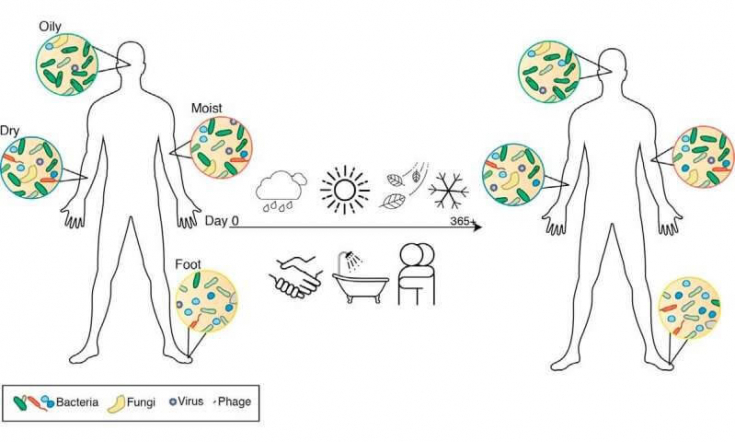In recent years, medical gastroenterology has turned to treatment strategies that target the gut microbiome and has undergone a marked change in its approach to antibiotics. Extrapolation of such techniques to aesthetic skin care has shown favorable preliminary results. Agents that can influence the skin microbiome are probiotics and prebiotics. Probiotics are cultures of live microorganisms found in a healthy microbiome. Prebiotics are various agents that can serve as a breeding ground for commensal and symbiotic microbes, accelerating their growth and promoting successful colonization. On estet-portal.com read,
- Topical probiotics and prebiotics for skin problems
- Prebiotics for the skin: maintaining a healthy microbiome
- Topical probiotics: marketing ploy or real skin help
- e Topical probiotics and prebiotics for skin problems
cosmetics
based on prebiotics and probiotics are quite common in both professional and home cosmetic lines. Numerous studies have shown that prebiotics and probiotics can bebeneficial for the skin, and even provide an anti-aging effect.
 The use of prebiotics and probiotics in topical products also occurs in dermatology, primarily for the treatment of
The use of prebiotics and probiotics in topical products also occurs in dermatology, primarily for the treatment of
acne. Encouraging results have been obtained using a cream containing bifidobacterium longum probiotic in patients with increased skin reactivity. The researchers noted a pronounced decrease in skin sensitivity and an increased resistance of the skin to physical and chemical aggressionand. Read the most interesting articles in
Telegram! Prebiotics for the skin: maintaining a healthy microbiome
Prebiotics
are relatively easy to use, as agents with proven prebiotic activity are usually fairly stable and easy to incorporate into cosmetics.There are several studies that support the effectiveness of prebiotics for skin health. For example, glucan has been shown to stimulate the growth of beneficial resident flora.

antibacterial solutions such as alcohol, salicylic acid, triclosan, benzoyl peroxide, or topical antibiotics. Elimination of staphylococcus epidermidis during topical antibiotic therapy leads to a sharp decrease in the amount of antimicrobial peptides, and increased colonization by Staphylococcus aureus and other potential pathogens, which ultimately leads to dysbiosis and inflammation. Any solutions containing alcohol or salicylic acid and non-selective bacterial preparations are likely to negate the effect of prebiotic and probiotic therapyand.
The 4 seasons of our skin: major skin changesProbiotics for topical application: a marketing ploy or a real help to the skin
Topical application of probioticsproblematic
. The main difficulty iskeeping a live bacterial culture in the product for many months, as only live microorganisms can colonize the skin. The authors of one in vitro study concluded that many of the probiotics tested prevented biofilm formation, suggesting that they could be used as an adjunct to conventional therapy in the treatment of skin conditions.
It is also not easy to determinewhich bacteria are neededto correct certain aesthetic problems, and most importantly, the baseline of a healthy microbiome has not yet been established because individual microflora variability is too wide.
Other complicating factors
are the general condition of the patient's skin, lifestyle and, most importantly, the use of cosmetic and hygiene products, which can prevent re-colonization and restoration of a healthy microbiome during the period of active therapy.The practical use of probiotic fermented bacterial lysates
is more justified. Lysates are obtained when beneficial bacterial cultures are grown in an enriched medium and the resulting mixture, consisting mainly of cytoplasmic gel, membrane fragments and organelles, is used as the active ingredient. Bacterial lysates enhance the growth of commensal flora and generally act as prebiotics, although they are technically closer to probiotics.The development of microbiome-friendly skincare
is an emerging field. The research base on prebiotics and probiotics is still insufficient, and we are just beginning to accumulate relevant knowledge. There is a need for more scientific literature to confirm the effectiveness of such skin care and to identify its limitations.Skin health and the role of the microbiome in preventing skin aging







Add a comment